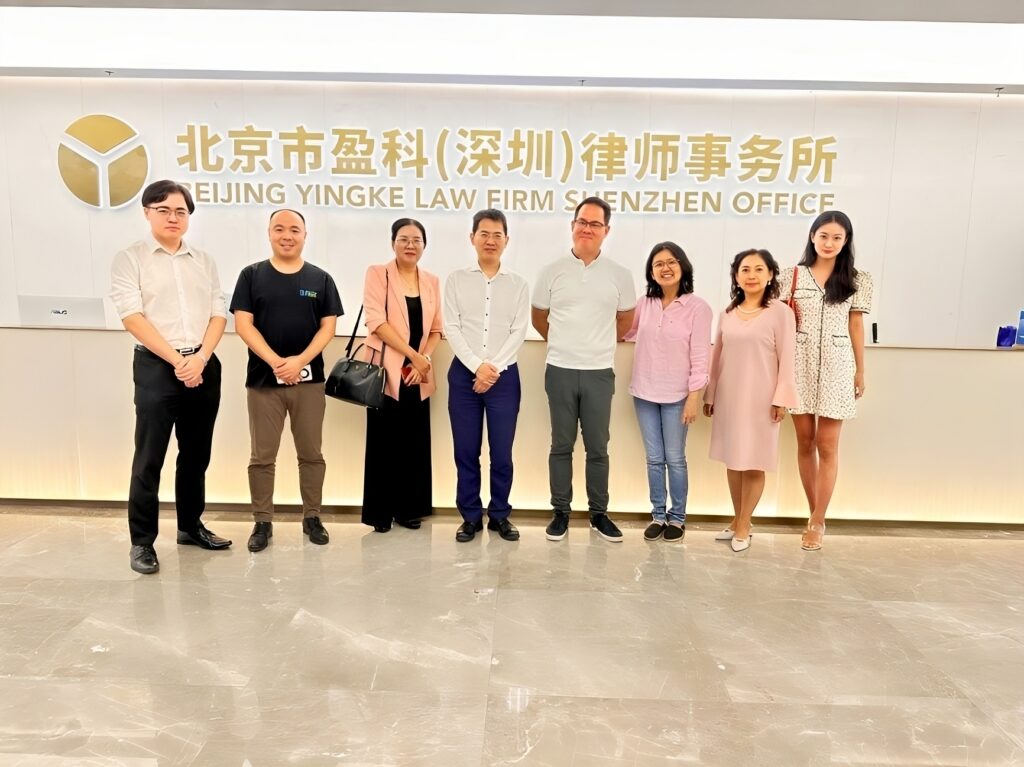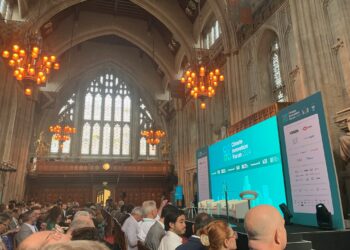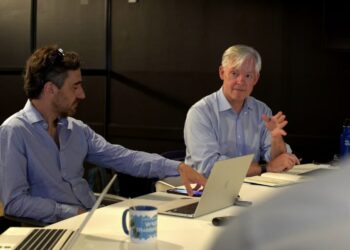Just a small (metro) train ride away from Hong Kong, straight at the border with China lies Shenzen. A city that has not only grown into China’s Silicon Valley and a mighty Tech Centre for the Empire of the Middle in just 40 years, but also for us clean tech and new mobility nerds, it has grown its name on being a centre where electrification happens. Home of the rising star: BYD, the city with Shell’s largest EV station offering 258 public fast charging points. Indeed, it’s a place where you can Build Your Dreams…
Whereas our partner Woon Hui had the pleasure to visit Shenzen before lockdown, I had to endure a pandemic to finally see Shenzen for myself this October in 2023 to satisfy my curiosity and finally meet our network connections in China.
With the exception of going through a rather manual and painful experience VISA wise, Shenzhen did not disappoint. Our key contacts Angel and Chris Ha had setup a tight agenda for us to meet plenty of interesting people. From the Battery Scale Up OLiPower, Yinke Law Firm and the local Startup accelerator E-Nova we even managed to squeeze in a superb Chinese lunch. Now, more than a week and quite some jet lag later it’s time to reflect…
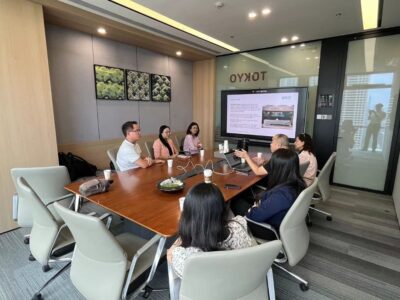
Christopher Gruen and Woon Hui Oh introduced to Shenzen’s Startup and Electrification scene by Angel Ha (middle)
Listening to our contacts in China carefully, for Chinese doing business with the West has become much more difficult than before the pandemic. The geopolitical divide between East and West is obviously no secret. Over the years, China has progressively distanced itself from the West and vice versa. The US has been assertive in its approach to reducing dependencies on China, and Europe has followed suit to some extent.
During our interactions with our partners in Shenzhen, we recognized this to be a crucial concern. The growing divide threatens the progress toward everyone’s net-zero and decarbonization targets. It’s a reality we have to confront.
.
.
Can we afford to isolate China?
Given the urgency of the climate crisis and China’s expertise in electrification, the answer is a resounding ‘no’. The country has a wealth of knowledge and capital that could greatly contribute to the global fight against climate change. Moreover, it can significantly accelerate achieving net zero goals.
Contrary to some old fashioned belief in the West, China has made remarkable strides in electrification over several decades. The sight of electric vehicles dominating the roads in Shenzhen was a stark testament to this fact. China’s leadership in intellectual property (IP) around electrification further amplifies this point if you talk to the subject matter experts – in particular around electric vehicles and batteries.
And guess what? Slowly public opinion in Western market seems to wake up to this fact. Just count how many Chinese EV brands are entering the European market and starting to gain market share? Growth rates have been on a steady increase based on a great value for money ratio. Often, the rates undercut local automotive OEMS price – accommodating those market segments being hungry for affordable and smaller EVs.
There is a paradigm shift in international trade
As we navigate the complexities of the globalized world, there is a noticeable paradigm shift in the realm of international trade. The narrative of free trade and open markets is increasingly shadowed by an era of trade protectionism, particularly in the United States and the European Union. The focus of this intensifying trade war next to the advanced chip technology market is the electric vehicle / battery, dominated by Chinese state-subsidized players like CATL, BYD, and SAIC.
The US and EU are increasingly watchful of the Chinese players who benefit from state subsidies. These subsidies have catapulted Chinese EV manufacturers into direct competition with Western brands, resulting in a significant market share. The European Commission is investigating the imposition of tariffs on Chinese EV imports, which aims to protect EU producers. It echoes past issues with solar panel production affecting local OEMs.
Contrastingly, the US has adopted a more aggressive stance. The US imposed high tariffs on Chinese imports and blocked their access to advanced semiconductor technology. This technology is crucial for the future. The aim is to contain competition, driven by the perception of China’s assertive trade policy and trade relations imbalance.
However, it is essential to remember that most US and EU companies benefit from state-backed programs. These programs are supported by the Individual Retirement Account (IRA) and REPOWER EU. This raises questions about not only the fairness of these protectionist policies but on how to leverage these subsidies best. Are we heading towards a world where the lines between free trade and protectionism blur, leading to a contested global economic order?
The global EV (and battery) market is becoming a battleground where these economic philosophies and trade strategies clash. How this plays out will define not just the future of the EV market, but also the contours of global trade and geopolitics.
All in all – this is indeed a difficult environment to maneuvre in. It’s also becoming a mine field with more and more complexities popping up on a monthly basis.
So what are the sustainable opportunities we can see in such a complex world?
Sector wise: In short “exporting IP” from China to the West and attracting much needed capital into the growing clean tech sector. Europe’s commitment to green energy and sustainability creates investment opportunities in renewable energy projects and companies driving this change.
The key lies in finding the right form of collaboration that also finds local support. Strategic Win-Win partnerships with European companies could pave the way for better political navigation, local presence, and local market insights without local European companies losing “control”.
Despite the apprehensions about Chinese investments, particularly in the US, it’s worth remembering that NOT ALL Chinese capital is tied to the Chinese government. There’s plentiful capital from Chinese private equity holders and investors outside China that could be productively channeled.
A shift in investment strategies – creating (joint) local production capacities can be an answer. While Western investors have traditionally sought entry into the Chinese market, Chinese companies are now eyeing the West to introduce their leading electrification IP. They do this by setting up distribution first and considering setting up production capacities locally where it makes economic sense – looking at Joint Venture setups to accelerate local market entries.
Ironically, this is similar to how China has allowed outside countries to operate within its borders for decades. Capital and IP have flowed into China in this manner, so indeed – why not facilitate a reverse flow?
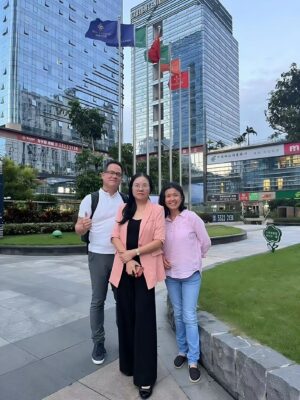
Christopher Gruen, Woon Hui Oh, and Angel in Shenzhen
In conclusion…
China’s size and global influence make it impossible to ignore. As someone raised within both Western and Chinese cultures, I hope the political situation doesn’t escalate further, as this would have catastrophic effects on the global economy and and the climate change agenda. In the meantime, we should be open to explore those win-win collaborations that aren’t seen as conflicts but as steps forward in the fight against climate change. After all, climate change is the bigger problem we collectively face…
What do you think? If you are or want to get involved in collaborations within a Chinese / European context then please contact us at NovAzure under info@novazure.com.


